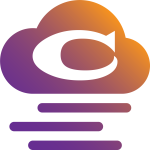Why ATS Keywords Matter in Remote Hiring
Remote hiring teams don’t have time to read every resume word-for-word. Instead, they use keyword filters—sometimes built into applicant tracking systems (ATS), sometimes used manually during quick scans. Either way, if your resume doesn’t reflect the ATS keyword language in the job description, you’re invisible.
That’s where keyword strategy comes in. It’s not just about “beating the bots.” It’s about matching what the company is asking for—using their language, not yours. This increases your chances of getting past digital filters and landing human attention.
❌ A candidate writes 'Built client websites using modern UX best practices.' But the job post says 'WordPress, Figma, and responsive design.' Their resume gets skipped because the keywords don’t match.
✅ A candidate rewrites to: 'Built responsive WordPress websites using Figma prototypes aligned with UX best practices.' This line mirrors the job post and scores higher in ATS and recruiter scans.
This isn’t gaming the system. It’s meeting the system where it is. And in remote hiring—where hundreds of applicants apply from anywhere—using the right keywords can mean the difference between “interview” and “auto-reject.”
👉 Want a formatting example? Start with our remote resume guide.
How Applicant Tracking Systems (ATS) Work
Applicant Tracking Systems scan resumes to decide whether your application is worth forwarding to a human. They look for matches based on job title, skills, tools, and experience terms pulled from the job post. No match? No interview.
Most ATS tools rank or filter candidates based on keyword density and relevance. Some systems use a simple “CTRL+F” style scan. Others, like Workable or Lever, auto-tag applicants by terms in their resume. Either way, you need your resume to echo the job description’s language.
You can also scan your resume with free tools like Jobscan to see how well it matches a job post.
This is especially true for remote roles where hiring managers may never meet you in person. Your written materials are your first—and sometimes only—chance to make the shortlist.
How to Extract ATS Keywords from Job Descriptions
Every job description is a cheat sheet. If you read closely, it tells you exactly what the hiring team wants to see in your resume, profile, and cover letter. Your goal is to turn that language into a personalized keyword list.
Start with the job title and responsibilities section. Highlight any recurring tools, soft skills, certifications, or deliverables. Then move to the requirements—this is where most ATS filters are drawn from. Common keyword categories include:
Features
Match role phrasing exactly (e.g., 'Customer Support Specialist' vs 'Customer Service Rep').
Include tools like Notion, HubSpot, Figma, ClickUp, etc.
Note phrases like 'cross-functional collaboration' or 'self-motivated.'
Highlight things like Google Analytics, Salesforce, or Scrum Master.
Include keywords like 'Agile,' 'SEO best practices,' or 'OKRs.'
Look for deliverables like 'client onboarding,' 'email conversion,' or 'dashboard reporting.'
You don’t have to use every term, but a good rule is to match at least 60–70% of relevant terms directly, especially those that appear early or are repeated.
Group & Rank the Keywords by Impact
Not all ATS Keywords carry the same weight. Some are mission-critical for getting through the ATS, while others help shape your message for a human reader. Once you’ve extracted keywords, group them by type and prioritize them.
Features
Titles, must-have tools, and required qualifications—non-negotiable for ATS filters.
Nice-to-have tools, role-specific soft skills, and secondary functions.
Phrases like 'autonomy,' 'fast-paced,' or 'mission-driven'—great for cover letters or 'About' sections.
Terms that boost visibility in LinkedIn searches or job board profiles.
Client deliverables or metrics that tie your work to impact.
Capture alternatives (e.g., 'remote onboarding' and 'virtual onboarding').
This step helps you tailor different materials for different goals. Core keywords go on your resume. Cultural ones work in your LinkedIn summary. SEO-friendly terms can live in profile skills. This is how one job post can power your whole application strategy.
Where to Place Keywords in Your Resume
Finding the right keywords is only half the job. The other half? Knowing where to put them so ATS software and recruiters actually find them. A keyword buried in a footnote won’t do you any favors.
Features
Mirror the posted job title at the top of your resume for instant match.
Use 2–3 core keywords in a natural, narrative form. Avoid stuffing.
List technical tools, certifications, and methodologies in a clean format.
Weave keywords into achievements—not duties. Focus on results.
Include exact matches for credential-based filters like ‘Scrum Master’ or ‘Google Analytics.’
Use a descriptive file name like “FirstName_Remote-CustomerSuccess_Resume.pdf” to boost visibility.
The goal isn’t to over-optimize—it’s to create alignment. If your resume speaks the same language as the job post, you’re signaling readiness to both bots and humans.
Indeed also outlines where to place resume keywords for best ATS performance.
Sync Your LinkedIn Profile for ATS & Recruiters
LinkedIn may not use a formal ATS, but its search algorithm is powered by keyword relevance. Recruiters use filters by title, tool, and certification—so syncing your resume keywords to your LinkedIn profile helps surface your name in searches.
Start with your headline. Use the most relevant job title and 1–2 tools. For example: “Remote Customer Success Manager | Onboarding • Churn Reduction • HubSpot”. Then move to the “About” section and mirror your resume’s summary—using soft and cultural keywords naturally.
LinkedIn recruiters filter by title, skills, and tools—see how it works.
Features
Include role + 1–2 high-impact skills or tools.
Repurpose your resume summary—use readable formatting and first-person voice.
Paste in results-based bullets from your resume with light rewording.
Add 30 relevant skills—prioritize core tools and terms from your keyword list.
Manually add matching credentials to boost filter matches.
Use a clean, professional LinkedIn handle (e.g., linkedin.com/in/yourname).
This doesn’t just help with visibility—it builds trust. When your profile echoes your resume and the job post, recruiters are more likely to reach out. That consistency = credibility.
Use Keywords in Your Cover Letter Without Sounding Robotic
Cover letters are still scanned by ATS—but they’re also read by humans. That means you need to balance ATS keywords targeting with personality and narrative. No one wants to read a buzzword soup.
Pick 3–5 keywords from your job description analysis. Then weave them into your story—how you work, what you’ve done, and how you match the team’s goals. Always speak to the company’s challenges, not just your skills.
Instead of saying, 'I am a highly collaborative and efficient communicator,' write: 'At [Company], I led async team updates across time zones using Notion and Slack—cutting status meetings by 40%.'
That one sentence includes two key tools, async communication, and a measurable outcome—without sounding forced. Aim for this type of contextual alignment throughout your letter.
Keep It Consistent Across All Platforms
Once you’ve got the right keywords, use them everywhere you show up professionally—because recruiters will cross-reference. A LinkedIn profile that doesn’t echo the resume can look like a red flag.
Here’s where to repeat and reinforce your keyword strategy:
Features
Mirror job titles, skills, and outcomes from your keyword list.
Match tone, tools, and titles in headline, About, and skills sections.
Weave in soft skills and tools contextually, not mechanically.
Use keyword-aligned project titles, descriptions, and meta tags.
Sites like FlexJobs and We Work Remotely use keyword filters too.
Include your remote title or expertise niche to reinforce branding.
This consistency builds a clear brand: one that matches both the job and the recruiter’s expectations. No single keyword will get you hired—but a cohesive, aligned presence just might.
FAQs: ATS Keywords for Remote Roles
Still sorting through the dos and don’ts of keyword strategy? These FAQs break down what ATS keywords are, how to use them naturally, and what really makes a difference in remote applications.
Keywords aren’t just about algorithms—they’re about clarity. When you match the language recruiters are scanning for, you make their job easier—and your resume more memorable.
Final Checklist: Is Your ATS keywords Game Strong?
Before you hit submit, double-check that your resume and LinkedIn echo the language that gets remote recruiters to stop scrolling. Here’s your last-minute checklist:
Features
Pull top keywords from the 'Requirements' and 'Responsibilities' sections.
Prioritize tools, hard skills, and recurring soft skills.
Weave keywords into job bullets and your summary naturally.
Add keywords to your headline, About, and skills section.
Use 3–5 key terms while telling a human story.
Mirror top keywords across your portfolio and job board profiles.
Strong keywords won’t land the job alone—but they do open the door. With the right language in the right places, you’ll stand out where it counts: in ATS scans and recruiter inboxes.
- Get a Remote Job – No Experience Needed
- Async vs real-time remote
- ATS Keyword Strategy
- Top Soft Skills for Remote Jobs
- Office vs Remote Job Skills | What Really Changes
- What Remote Recruiters Look For
- Remote Resume Revamp | How to Tailor Your Resume for Remote Roles
- Top Remote Jobs That Pay Well in 2025
- How to Work Remotely While Traveling (Digital Nomad Edition)

